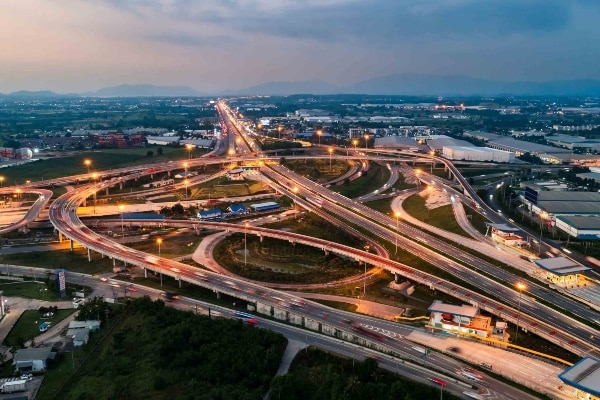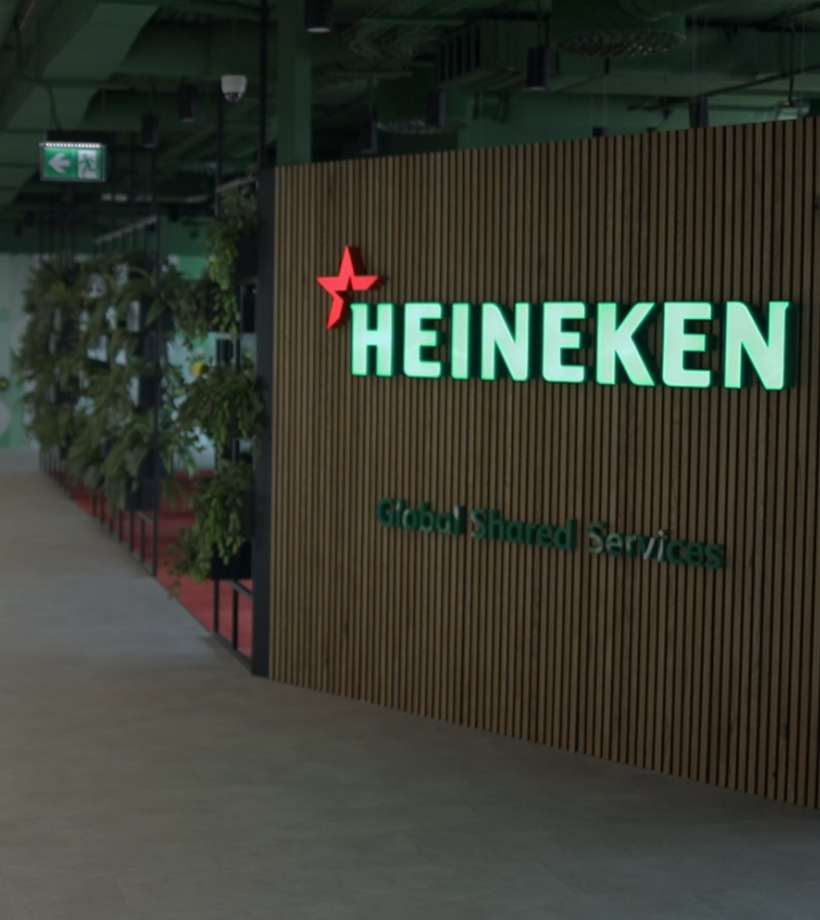-
Featured services
2026 Global AI Report: A Playbook for AI Leaders
Why AI strategy is your business strategy: The acceleration toward an AI-native state. Explore executive insights from AI leaders.
Access the playbook -
Services
Alle Services und Produkte anzeigenNutzen Sie unsere Fähigkeiten, um die Transformation Ihres Unternehmens zu beschleunigen.
-
Services
Network-Services
Beliebte Produkte
-
Services
Cloud
Beliebte Produkte
-
Services
Consulting
-
Edge as a Service
-
Services
Data und Artificial Intelligence
- KI und intelligente Lösungen
- Daten-/KI-Strategie und -Programm
- Data Engineering und Plattformen
- Daten-Governance und -management
- Datenvisualisierung und Entscheidungsfindung
- $name
- GenAI Platforms
- GenAI Industry Services
- GenAI Infrastructure Services
- GenAI Value Transformation
- Data und Artificial Intelligence
-
-
Services
Global Data Centers
-
Beliebte Produkte
-
Services
Application Services
-
Services
Sustainability Services
-
Services
Digital Workplace
-
Services
Business Process Services
-
Services
Generative AI
-
Services
Cybersecurity
-
Services
Enterprise Application Platforms
![]()
IDC MarketScape: Anbieterbewertung für Rechenzentrumsservices weltweit 2023
Wir glauben, dass Marktführer zu sein eine weitere Bestätigung unseres umfassenden Angebotes im Bereich Rechenzentren ist.
Holen Sie sich den IDC MarketScape -
-
Erkenntnisse
Einblicke und RessourcenErfahren Sie, wie die Technologie Unternehmen, die Industrie und die Gesellschaft prägt.
-
Erkenntnisse
Ausgewählte Einblicke
-
Die Zukunft des Networking
-
Using the cloud to cut costs needs the right approach
When organizations focus on transformation, a move to the cloud can deliver cost savings – but they often need expert advice to help them along their journey
-
So funktioniert Zero-Trust-Sicherheit für Ihr Unternehmen
Sorgen Sie dafür, dass Zero-Trust-Sicherheit für Ihr Unternehmen in hybriden Arbeitsumgebungen funktioniert.
-
-
Erkenntnisse
![]()
Copilot für Microsoft 365
Jeder kann mit einem leistungsstarken KI-Tool für die tägliche Arbeit intelligenter arbeiten.
Copilot noch heute entdecken -
-
Lösungen
Alle LösungenWir helfen Ihnen dabei, den Anforderungen an kontinuierliche Innovation und Transformation gerecht zu werden
Global Employee Experience Trends Report
Excel in EX mit Forschung basierend auf Interviews mit über 1.400 Entscheidungsträger:innen auf der ganzen Welt.
Besorgen Sie sich den EX-Report -
Erfahren Sie, wie wir Ihre Geschäftstransformation beschleunigen können
-
Über uns
Neueste Kundenberichte
-
Liantis
Im Laufe der Zeit hatte Liantis, ein etabliertes HR-Unternehmen in Belgien, Dateninseln und isolierte Lösungen als Teil seines Legacysystems aufgebaut.
-
Randstad
We ensured that Randstad’s migration to Genesys Cloud CX had no impact on availability, ensuring an exceptional user experience for clients and talent.
-
-
![Heineken Landing Page]()
NTT DATA und HEINEKEN
HEINEKEN revolutioniert die Mitarbeitererfahrung und die Zusammenarbeit mit einem hybriden Arbeitsplatzmodell.
Lesen Sie die Geschichte von HEINEKEN -
- Karriere
Topics in this article
Industries the world over are gaining a deeper understanding of the power, reach and capabilities of generative AI. In this article, we assess its impact on businesses and how it is poised to transform roles and boost performance across business functions, customer operations and software development.
What is generative AI?
Unlike narrow AI, generative AI (or GenAI), a subset of artificial intelligence (AI), stands out for its ability to create new content by mimicking human-like creativity.
Voice assistants like Siri or Alexa are a good example of narrow AI. They can play music on command, but that music must already have been written. Google’s Lyria system, on the other hand, uses generative AI to generate vocals, lyrics and backing tracks in the style of popular artists.
So, where narrow AI focuses on a specific predefined task or a limited set of tasks, GenAI possesses a broader scope, making it versatile in various applications. It can produce realistic images, generate human-like text and even create music.
Current business applications
Generative AI's impact extends across diverse industries and has already come a long way in the automotive and design fields.
In the automotive sector, GenAI revolutionizes vehicle design and manufacturing. By analyzing vast datasets, it assists in creating optimal designs for components, improving aerodynamics and even optimizing fuel efficiency.
Automotive engineers leverage GenAI to explore numerous design possibilities, leading to the development of safer, more fuel-efficient and aesthetically pleasing vehicles. Additionally, GenAI plays a pivotal role in simulation testing, enabling engineers to assess the performance of various design iterations in virtual environments before physical prototyping.
In the design field, GenAI is a game changer. Graphic designers and artists use it to generate unique visual elements, fonts and layouts. For architects, GenAI assists in creating innovative building designs based on specific criteria such as sustainability, functionality and aesthetics. By inputting parameters and constraints, architects can explore an extensive array of design possibilities, optimizing the creative process. This application of GenAI not only expedites design workflows but also fosters creativity and innovation.
These applications demonstrate the versatility of GenAI and show how it goes beyond routine tasks, unlocking novel possibilities and transforming traditional industries. As technology advances, its applications in automotive design and beyond are likely to further redefine the boundaries of innovation and efficiency.
Customer experience and interaction
Generative AI transforms customer interactions by personalizing experiences. Organizations use it to analyze user preferences and tailor recommendations accordingly, creating a more engaging and relevant customer journey.
For example, in ecommerce, GenAI can analyze a customer’s past purchase history, browsing behavior and demographic information to generate personalized product recommendations. This level of personalization extends beyond product suggestions to tailor the content, advertisements and promotional messages customers see, in line with their individual preferences and interests.
This nuanced approach to customer interaction enhances engagement and fosters a deeper connection between businesses and their customers, ultimately contributing to increased customer satisfaction and loyalty.
Weighing the costs and benefits of GenAI
The current hurdle in GenAI adoption lies in the significant initial costs associated with acquiring specialized talent, advanced infrastructure and high-performance software. Additionally, organizations might incur costs related to data acquisition, cleaning and storage, as GenAI heavily relies on extensive and high-quality datasets.
However, as the technology advances and becomes more mainstream, increased competition among technology providers and a growing pool of AI specialists may drive costs down. The cost of acquiring and retaining skilled personnel could reduce, while advancements in cloud computing services and the availability of more cost-effective AI solutions could make infrastructure costs more manageable for organizations of various sizes.
And, as GenAI becomes more prevalent, economies of scale may come into play. Widespread adoption could lead to the development of standardized solutions, lowering the costs associated with technology acquisition and implementation. Standardization could also facilitate easier integration with existing systems, reducing the complexity and cost of deployment.
As GenAI becomes an integral part of business strategies, organizations can expect increased efficiency, improved customer satisfaction and a competitive edge in their respective industries.
Integration with existing systems
The integration of GenAI into existing systems varies depending on the complexity of operations. Although advancements in technology are making this integration more seamless, it is crucial for organizations to carefully plan the integration process. For a smooth transition, factors like data compatibility, system architecture and employee training must be considered.
A partner like NTT DATA can offer robust infrastructure support. Leveraging our cutting-edge solutions such as Private 5G and Edge as a Service, we can enhance the integration process. Private 5G, with its secure and dedicated network, provides the low-latency, high-throughput environment essential for GenAI operations. This technology ensures a reliable and fast connection, facilitating the real-time data processing and analysis that are critical to AI applications.
Moreover, our Edge as a Service solutions contribute to the efficiency of GenAI by bringing computing resources closer to the data source. This reduces latency and enhances the overall performance of AI algorithms. It enables organizations to leverage the power of GenAI in a decentralized manner, optimizing the distribution of computing resources across their infrastructure.
Challenges in the regulatory landscape and other concerns
Implementing GenAI comes with challenges such as ethical concerns, data privacy issues and the potential for biased outcomes. Organizations need to address these concerns proactively by establishing ethical guidelines, ensuring transparent data practices and regularly auditing AI algorithms. Employee training and awareness programs can mitigate challenges related to workforce adoption.
As GenAI gains prominence, regulatory bodies are also focusing on defining frameworks to govern its use. Privacy regulations, ethical guidelines and industry-specific standards are emerging to ensure responsible AI deployment. Staying informed about these regulations is crucial for businesses to navigate the evolving legal landscape.
Future trends for business operations
The future promises deeper collaboration between humans and AI, making AI decisions more understandable. Moreover, the fusion of GenAI with emerging technologies like augmented reality (AR) and virtual reality (VR) will reshape the business landscape. As AI continues to advance, organizations can anticipate more advanced applications and increased operational efficiency.
GenAI presents immense opportunities for innovation, personalized customer experiences and streamlined operations. However, organizations must act now to prepare for this revolution by assessing and upgrading their infrastructure, leveraging technologies like private 5G and edge computing.
By doing so, they can proactively position themselves to extract maximum value from GenAI in a rapidly advancing digital landscape. While challenges exist, including ethical considerations and regulatory changes, careful preparation will ensure that organizations can harness the full potential of GenAI.
Learn more about NTT DATA’s Edge as a Service to see how we can help you deliver new business outcomes.




